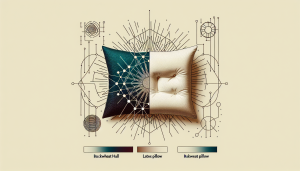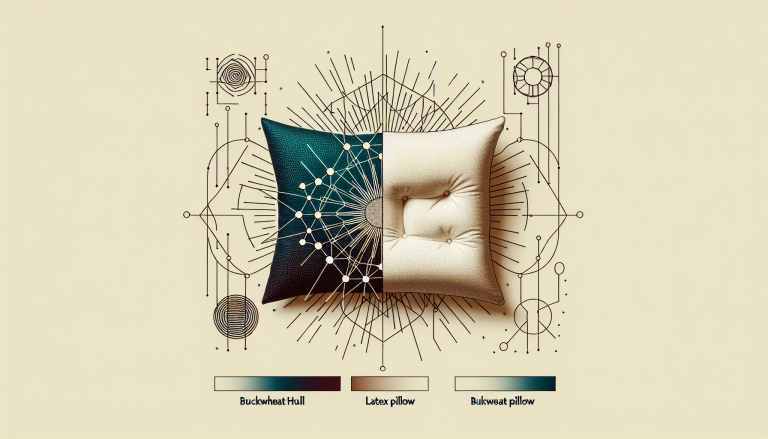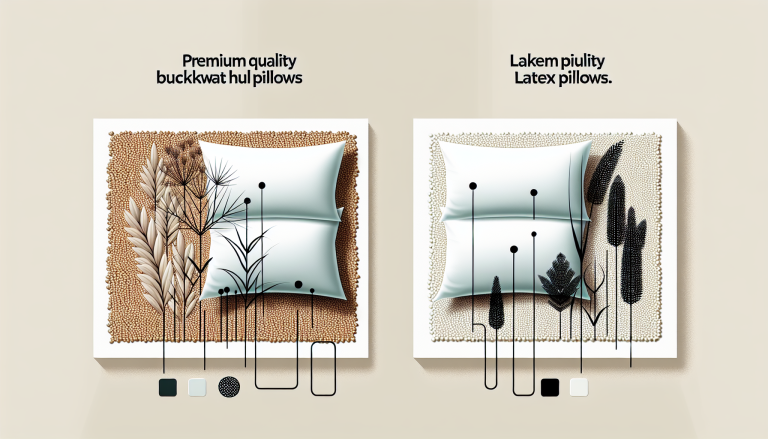Hypoallergenic Body Pillows
Organic Latex J-Shape Pillow
So you’re on the hunt for that perfect pillowy hug that’ll keep sneezes at bay? Meet the organic latex J-Shape body pillow, your soon-to-be nap-time buddy! This pillow’s funky shape isn’t just for giggles, it’s aces for expecting moms and those who snooze on their sides. The pillow’s got a nifty cover to keep allergens away, so you can snooze without needing a tissue nearby (RehabMart).
Features of the Organic Latex J-Shape Pillow
- Support for Different Body Parts: Keeps your noggin, arms, and legs happy with its multi-tasking support.
- Durability: Built to last with organic latex, it’s like the superhero of pillows.
- Hypoallergenic: Banishes the allergen gremlins, perfect for folks with the sniffles.
Customer Reviews and Benefits
Fans of this pillow can’t stop shouting from the rooftops about its sturdiness and body-coddling design. Folks have claimed some serious sciatica relief and whole-body comfort, making side-sleepers sing its praises (RehabMart).
| Customer Feedback | Benefit |
|---|---|
| “Absolutely fantastic support!” | Takes the edge off pressure points |
| “Good for my sciatica!” | Full-body cuddling vibes |
| “The best pillow for side sleeping.” | Snooze posture hero! |
Whether you’re navigating the baby bump life or just craving better sleep, this pillow’s got your back… and sides…and, well, more! Want a bigger buffet of pillow choices? Dig into our reads on what are the benefits of a memory foam ergonomic body pillow for side sleepers and how does a cervical support pillow align the neck and spine.
Crafted with friendly-to-the-planet materials and packed with coziness, the organic latex J-Shape body pillow should top your list if you’re dreaming of sneeze-free slumbers.
Materials Used in Hypoallergenic Pillows
Picking out the right materials for hypoallergenic body pillows can be like trying to catch a dream—tricky but oh-so-rewarding when you get it right, especially for those who love sleeping on their sides. Let’s jump into a head-to-head of natural vs. synthetic materials and discover the top contenders for allergy-busting pillows.
Natural vs. Synthetic Materials
Choosing between natural and synthetic options can be the difference between a sneeze-free sleep and waking up in a fog of allergens. Let’s see how they stack up:
| Feature | Natural Materials | Synthetic Materials |
|---|---|---|
| Allergic Reactions | Naturally hypoallergenic and a breeze to breathe through (My Non-Toxic Tribe) | Could harbor nasties like formaldehyde and phthalates (Yana Sleep) |
| Breathability | Cool and airy, moisture-wicking champs | Can be stifling, making you sweat buckets |
| Support | Cushy, cozy, and often perfectly shaped | Sometimes solid or flimsy, lagging behind natural kin |
| Eco-Friendliness | Green-friendly and breaks down with ease (My Non-Toxic Tribe) | Might just clog up the earth longer than you’d like |
Natural goodies like latex foam, cotton, and buckwheat hulls shine bright in the hypoallergenic world. Polyester might cut the cost but sometimes comes with a hidden health bill.
Best Materials for Allergen-Proof Pillows
Eyeing the best materials for keeping allergens at bay? These gems could be your best bet:
| Material | Benefits |
|---|---|
| Memory Foam | Dust mites and molds run for the hills; shapes up just right (Allergy Store) |
| Natural Latex | Breathe easy, stay clean, and ditch those dust mites (GetCurex) |
| Bamboo Fiber | Gives allergens the boot, keeping sneezes away (Cariloha) |
| Cotton | Breathes like a champ while keeping you chill all night |
| Buckwheat Hulls | Solid as a rock with natural mold and bug resistance |
Opting for these hypoallergenic superstars might just transform your sleep from a sneezy nightmare into dreamland. Curious for more? Check out our deep dives on what makes a memory foam ergonomic body pillow a side sleeper’s best friend and how a hypoallergenic U-shaped pillow might save allergy sufferers. Sweet dreams are just around the corner!







